UP THERE, EVERYWHERE, the world’s first cloud-based agency, was born from the fallout of the 2008 global financial crisis, and had its biggest year of growth in 2020, the first year of COVID-19. Here are our most important learnings from 10 years of working successfully in the cloud and thriving during a crisis.
Pioneering a new model
As Winston Churchill famously said, “Never waste a good crisis.” We began the journey of our cloud-based agency with those words in our minds, and with a fair amount of panic in our hearts.
In 2008, as Lehman Brothers declared bankruptcy and the world economy spiraled out of control, agencies in their traditional form were failing out of existence. At that time, I had just started my own business and was a marketing consultant mainly for GE Life Sciences (now Cytiva) in an industry that was relatively immune to the slings and arrows of an outrageous world economy — or so I thought. By 2010, everyone who owned a business was affected. My main client put a hold on all marketing spending for 6 months – sufficient time for my small business to starve to death.
That was when the concept of a cloud-based model for an agency got my attention. It was my colleagues and friends Eric Dowell and Julian Stubbs who came up with the idea. Julian was fed up with his daily commute, and found that he was just as productive when working from his home office outside of Stockholm. He was working regularly with Eric, who was based in Princeton, New Jersey. Together they were producing work of a high quality thanks to iChat, the online messaging tool from Apple that had gradually introduced video and screen sharing.
Personally, I had been forced to lay off all employees and I was wondering what to do next. I was working in the life sciences, a branch where market communications requires specialist knowledge. As long as my business was tied to a particular location, I was going to be limited both in my reach for talent, as well as my reach to potential clients.
Julian, Eric and I started to work on projects that were essentially an expansion of their two-man model. Gradually, we grew with the addition of Adrian, Anne, Shari, Alan, Lawrence and Björn. The beauty of the model was that it made no difference where people were located — the important thing was their talent and their tenacity. Thus, we launched an agency with the slogan, “No employees. No offices. Just people.”
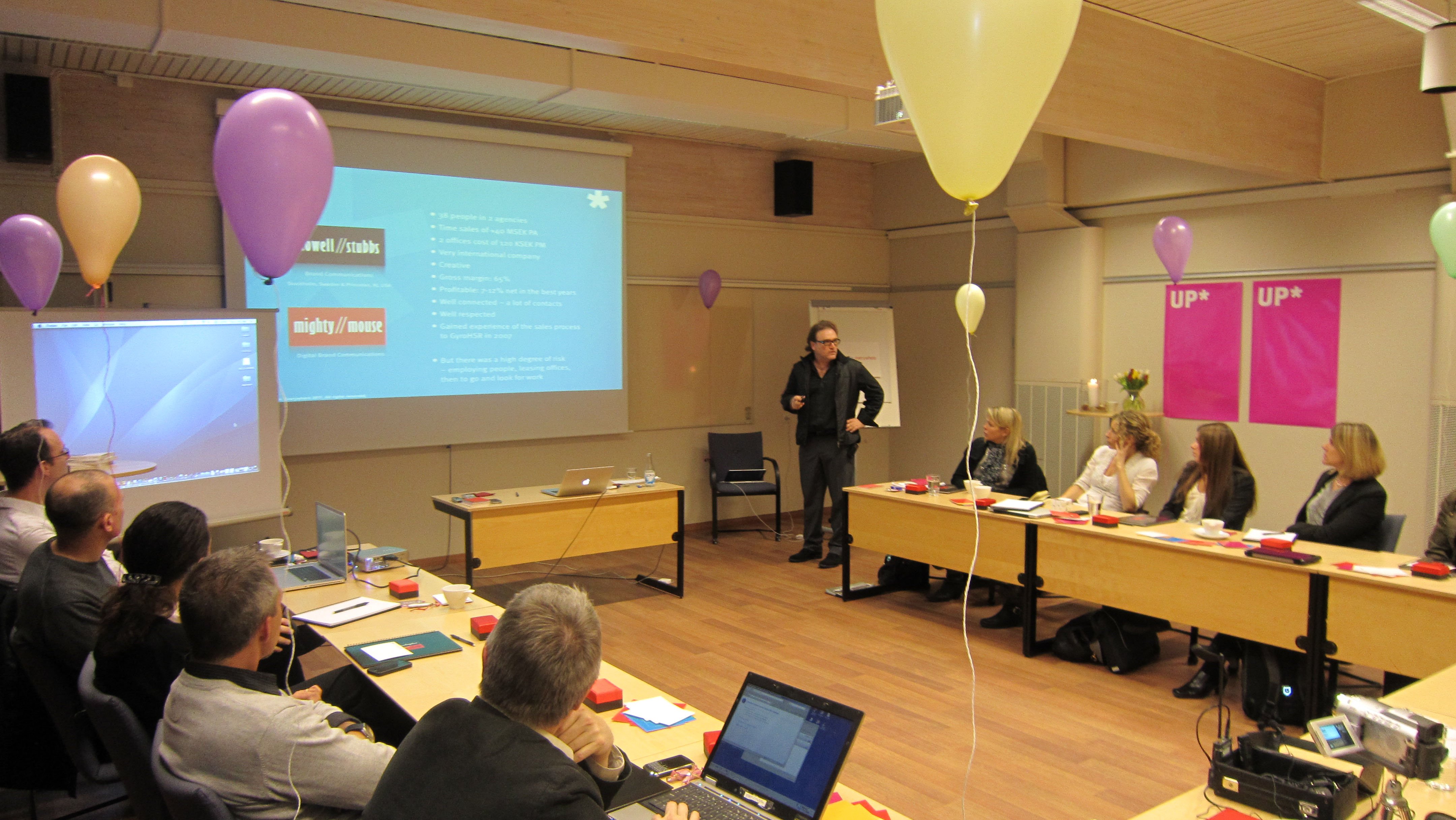 UP's first member meeting in 2011 in Uppsala, Sweden had more than 20 attendees on site and another dozen virtually over Skype.
UP's first member meeting in 2011 in Uppsala, Sweden had more than 20 attendees on site and another dozen virtually over Skype.
Over the last 10 years not only has UP’s cloud-based business model passed the test of time with flying colors. In 2020 it proved to be positively essential for surviving and even thriving during the COVID-19 pandemic.
Insights for successful cloud-based working
From 10 years of trial, experimentation and learnings, here is a list of our key insights for success.
1. Communication technology
Eric and Julian started out with iChat, but that was limited to Macs and no matter how much we like Macs, iChat didn’t have the ubiquity of Skype. Skype became our first essential tool. In 2010 Skype gave out rather regularly — you might blame the wifi, the broadband, the weather, whatever — all the same there were regular glitches, clicks and squelches. Sometimes the line would go quiet for up to a minute, and then voices would play back at super-high speed. It tested my patience immensely, and often made me question the sanity of running a business in the cloud.
In the 2020s, there are several stable video and screen sharing platforms, each with a slightly different flavor. People have become quite familiar with Zoom, Teams and GoTo Meeting, which are the clear winners coming out of 2020. Out of them all, I think Zoom is the best platform today. But I also want to give a big shout-out to Slack, which is immensely powerful for working teams, with an integration philosophy that is praiseworthy.
2. People
Julian was right when he stressed that businesses essentially choose agencies for the quality of their people. They simply want great people who do great work. If the agency was full of great people, we were bound to succeed. But that simple statement masks a deeper question: what makes a great cloud-based person?
There are many factors that make a great member. Personally, that means life science knowledge plus commercial acumen plus communicative talent. They are hard to find, but with the world as my recruitment base, I can in principle engage these rare people wherever they live, and I can therefore recruit the best in the world.
And there are several more factors that are equally important. For one, they don’t mind talking to you through a screen, or messaging you via a variety of tools. In fact, they get quite a kick out of it. They love the inspiration they get from an interchange with experts, who they can learn from and develop exciting ideas with. Nobody is perfect and people must be willing to learn from others. Someone who has a thirst for knowledge and is curious is a great asset.
It’s pretty much Matt Ridley’s concept of "ideas having sex with each other" in real time, in other words how smart the collective brain is. Unlimited specialization and exchange at light speed, independent of location - I think this is by far the greatest virtue of working in the cloud.
Yesterday, I participated in a brainstorming session with 14 people from all around the globe, all with very different skills and experience. Out of the one-hour session, we came up with about 20 original ideas. None of them could have been generated by a single person working alone. None of my thoughts are born in a vacuum – they always arise from learning, interaction and exchange.
Another factor is that the person is self-responsible and doesn’t need a manager. In the cloud, you need to have a mutual understanding that when you ask someone to do something and they agree, it will be done. Prospective members are carefully selected, are invited to become members because of their track record and a positive history of interaction with current members, and are nurtured with a view to a lifetime of rewarding work.
3. Customers
Of course no business can exist without customers and therefore I want to mention the learnings from our 10 years of serving them in the cloud.
Of primary importance is to meet your customers, face-to-face, at least once. This was impossible in 2020, and yet we still managed to gain many new clients. This can be partly attributable to the fact that organizations still needed to get the work done, so they accepted the necessary evil of having to meet online only. The other possible attribution is that being 10 years into the game, we were fully prepared to achieve our clients’ needs despite the distancing effects of the pandemic.
The principal reason for meeting face-to-face is gaining the trust of your customer, and ensuring a mutual understanding of the commitment we are entering into. But trust and understanding can be earned in so many ways: by providing exactly the right documents for the pitch; by demonstrating a clear understanding of the challenge through a great brief; by being on time and well prepared for every meeting; and by delivering what you promise at every deadline at the agreed cost. Customers see right through you when you’re winging it. Every fulfillment of a commitment builds trust and understanding, and every misstep eats away at it.
It’s vital for customers to meet the team members (either online or in person). We have never embraced the idea of crowdsourcing with anonymous service providers. I think it offers absolutely no value to the customer, since they need to know what each member of the team will bring to the table.
Let’s be frank: customers expect magic. The magic is something that they cannot do or never dreamed of being able to achieve, and that totally revolutionizes their ability to do business. If an agency isn’t achieving their customers’ wildest dreams, it’s not doing its job properly.
4. Hierarchy
At UP, there are no managers, no reports and no bosses. Inspired by Thomas L. Friedman, our cloud-based world was designed to be flat, embracing globalization and the premise that anyone in the world could join our business. It’s one of the factors that every member enjoys: skipping the overseeing manager they never wanted or asked for. Anyway, an organization that doesn’t physically meet, and where no-one is employed, would have a very difficult time exerting any hierarchy. So why not build an organization that doesn’t need it?
How do you get things done without ever being able to boss anyone around? The key belief in UP was to build a system, that you had to work within. The system guides people’s actions, and we believe this is a better way of managing how people work and what they do than having a traditional line manager. The other key was respect and trust. And you have to earn both of these. But isn’t that the case for any leader in any organization, anyway?
To kick-start the organization, though, we did need a core team. We call them ‘The 18’ because that’s how many we were. We meet every week for one hour to discuss the important barriers to progress — clients, systems, new offerings, the brand and marketing.
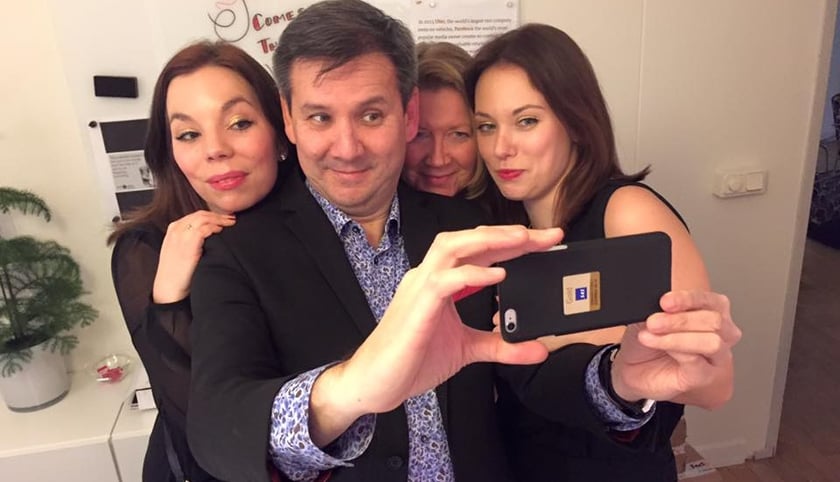 The author, Robert England, with some of the UP team members in Uppsala.
The author, Robert England, with some of the UP team members in Uppsala.
5. Culture
Building upon our flat philosophy is the equality among members. Everybody has different talents but are equally valued. Everybody has a right to voice their opinion. Naturally, we operate free of prejudice from race, creed, color, age and sexuality.
Unique to our culture is reciprocity, though not like for like, rather contributing with our special talents. For example: I’m skilled at putting together a pitch, so I might make one and win a new client project. I engage Markus and John to do the work. Therefore Markus and John get work without having to pitch.
We also recognized we needed another way to reward members for their communal work- where they gave their time for the benefit of the community. So we created an UP Membership rewards program we called MOVE ON UP. Every pre-agreed action is rewarded with points, and points are redeemable for everything from business cards to internal training, such as online writing retreats. This virtuous circle leads to more engaged members.
If I had to pick one value that drives UP, I’d say self responsibility. UP Members are expected to take self responsibility for their work, their colleagues, and their lives. We don’t have traditional managers to guide or discipline, so self responsibility is vital.
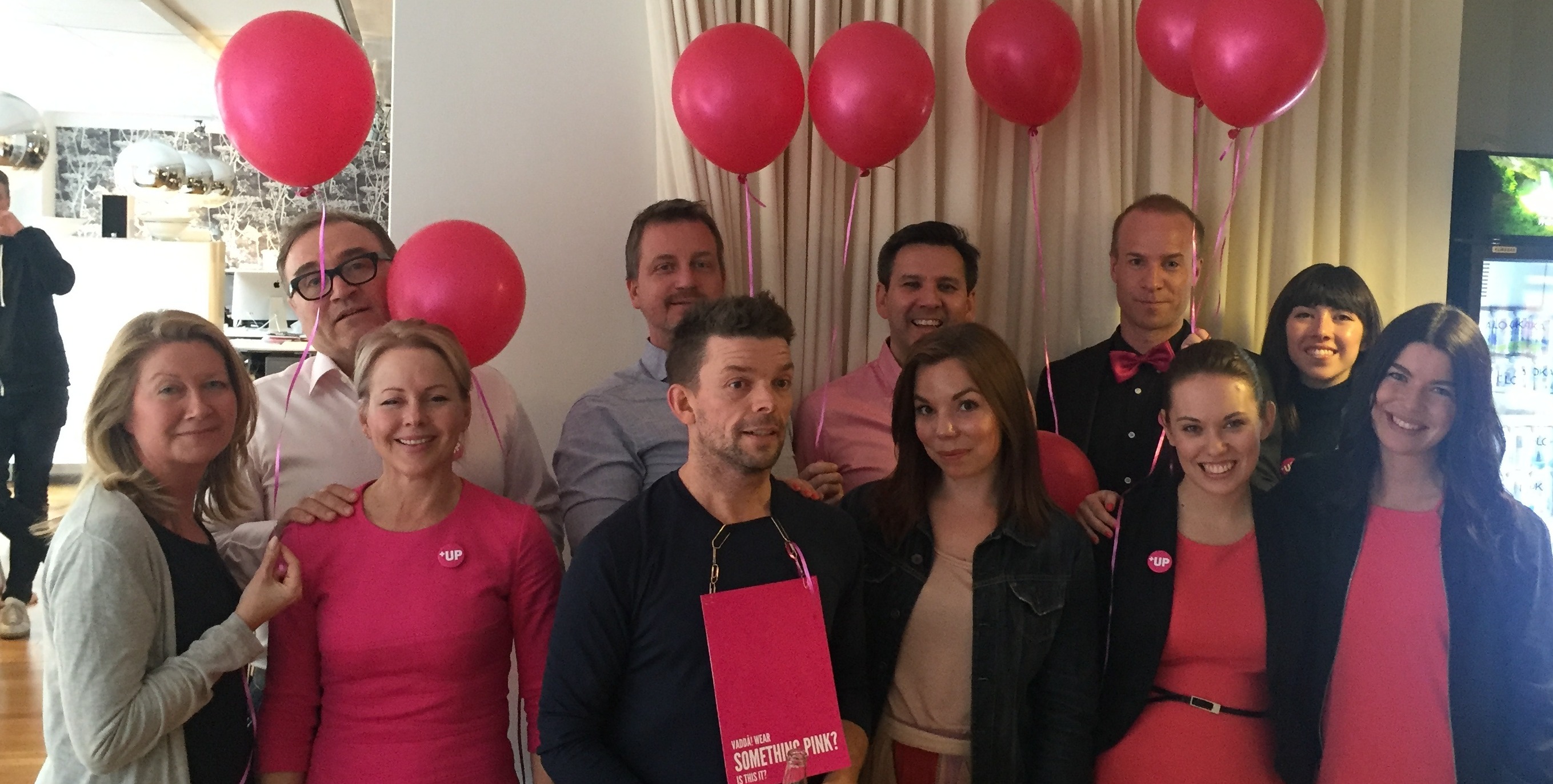 Some of the Swedish team celebrating at UP's five year anniversary party.
Some of the Swedish team celebrating at UP's five year anniversary party.
6. Engagement
It’s one thing recruiting good people, and it’s another thing altogether keeping them engaged. All of us want or need to earn money. Members will see little sense in joining us if they will not work at a level they find appropriate. So recruiting a member must be closely followed by getting them engaged in client projects.
Getting work distributed to members did not happen automatically between 2010 and 2020. It was an entirely manual process that was dependent on someone’s knowledge of the member’s skills — or that the member even existed. Still, engaging someone you’ve never met is a challenge. Therefore, the mentor plan came into existence.
If you believe in someone and invite them to be a member, it’s your responsibility to ensure that they are engaged in work. It is also a great aid to help new members navigate themselves with other members.
7. Software
Software to support our cloud-based experiment was characterized by feast and famine: there was plenty out there, but naturally none perfectly suited to the task, and one glaring hole. Among the cloud software platforms we have used are FreshBooks, Basecamp, TeamGantt, Asana, DropBox, HubSpot, WeTransfer, GoTo Meeting, Zoom, Slack, Skype, Google Suite, Microsoft Office 365 and iCloud. More will inevitably come in the following years.
It’s so far been impossible to choose one platform and exclude all others, mainly because, for example, one person might have Zoom and another person has Teams, so one person must use another’s product. But that’s not the big deal. The big deal is the philosophy of software design and usage assuming that everything is constantly changing. That’s a healthy assumption because it’s been the case since software was first launched.
In my mind, the best system is a lean central core with an API approach to third party integration. Some software will always do its thing better than others.
I mentioned a glaring hole. That was for a software system that could estimate work to clients, invoice them and pay members, according to local business regulations. It didn’t exist in 2010, so we built it. It’s called SUPER System and we are now planning the next iteration of this for the coming years. As cloud-based organizations develop, I predict there will be a greater need for such software.
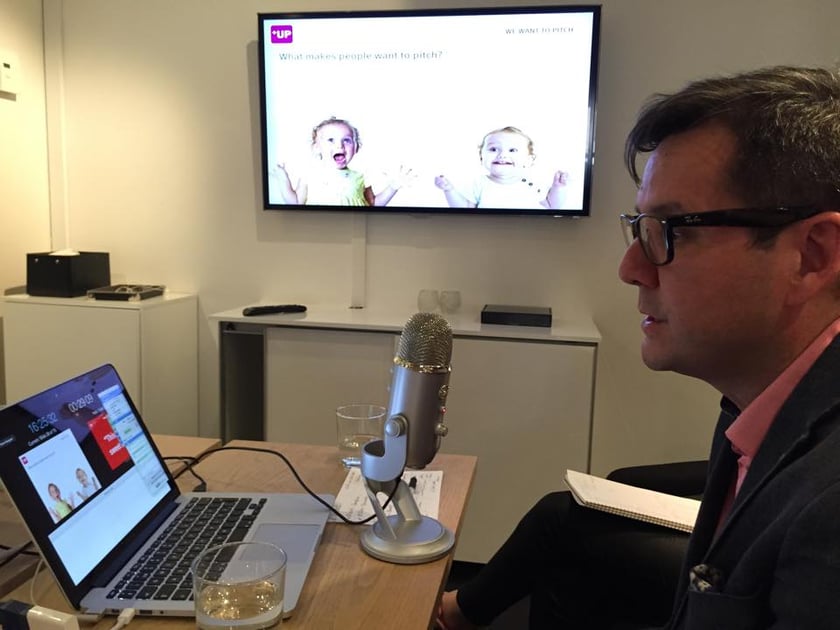 The author, Robert England, speaking during an UP global town hall webinar in 2015.
The author, Robert England, speaking during an UP global town hall webinar in 2015.
8. Systemization and process
Every organization needs a process, a way that things are done. In an organization where people are encouraged to think up new and innovative communicative and digital approaches to solving a challenge, it’s even more important to provide the necessary flexibility within given constraints. Only then can you get great creativity- when everyone understands the basic rules of engagement. It’s also important for growth that members who have never worked together know the process and can be immediately productive.
Our process is called BASE-UP®, and it stands for Brief, Audit, Strategy, Execution and Follow-UP. It guides every member and client through our working process. In fact, before we start work, we categorize the foreseeable working steps into the BASE-UP model.
BASE-UP ensures that you tick all the boxes in a project, and that members are speaking the same language at work.
9. Meetings and hubs
We see the virtues of working in the cloud, but we are still humans, with human needs. People need to meet now and then. 2020 really put us to the test, with a seemingly never-ending hiatus in personal meetings.
Many people will say that they can never work in the cloud because they need to interact with other people physically, but that assumes that all cloud work is done alone at home in front of a computer screen. Not so. Members have several online meetings a day.
From our first days, we realized the need to meet physically on occasion, so we established Creative Hubs.
Quite the opposite from offices, attendance at a Creative Hub is voluntary. They are designed to encourage good meetings among people. There are no cubicles, plenty of space to mingle, and quiet spaces where you can close a door behind you to work or talk privately. There are also lots of great places to eat together.
The Creative Hub is a breathing space that we all need where ideas are born through the thrill of informal interaction, and where strong alliances are forged. The Creative Hub is the death of the open plan office and its dehumanization of the workforce.
In 2019, we held our first all-members meetup. We invited members to a four-day conference in Palma, Mallorca, where people who had been working together for years met for the first time. If ever you needed proof of the power of face-to-face interactions, this was it. There was love in the air.
The 2020 hiatus scuppered our plan for another global meetup, but we have our sights on one in 2021.
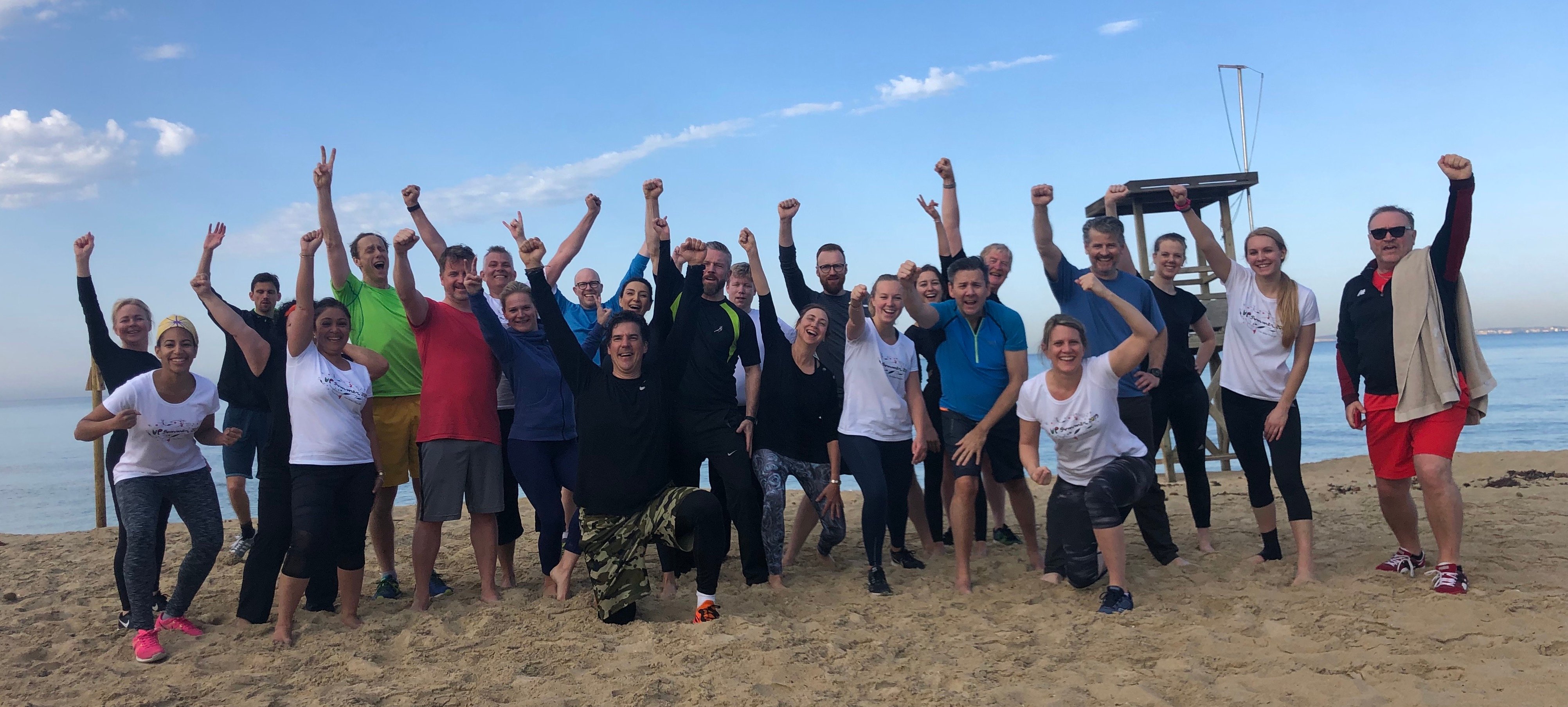 UP team members enjoyed morning fitness challenges at the Global MeetUP in Mallorca in 2019.
UP team members enjoyed morning fitness challenges at the Global MeetUP in Mallorca in 2019.
10. Compensation
Let’s get to a very necessary subject: the moolah, the readies, the money. No matter how attractive the work and the business model, we have to get reasonably paid for our efforts. Otherwise neither the model nor membership are sustainable.
When we started, we saw the major opportunity of being able to serve any customer, regardless of their size. Teams could be scaled to suit any customer and any project. We have in fact performed projects with as few members as two and as many as twenty.
Our greatest learning is it is essential to scale the project and expectations to what customers can afford. Some want a cheap and cheerful video, others want a content-heavy, lead nurturing website or a global event. The fact that we never have to overburden a project with members, or charge clients for expensive and low-value client-agency meetings, has a direct positive impact to our customers’ budgets.
The cloud and its lessons
When it comes to understanding our development, I am often reminded of the natural process of evolution: we started out as a survival mechanism and today our model is a species in its own right.
Our cloud-based organization defines a new and unique concept: e-ployment® — which solves the disadvantages of employment and freelancing, and brings together the combined capabilities of any group of people to any service sector business.
In studies, remote workers have been found to take fewer sick days and stay motivated for longer. We have a similar observation in our organization, in that people tend to stay longer in the organization as members, compared to their longevity as employees in our previous experience as employers.
That’s why we think of e-ployment today as a movement for changing the way the world works.
The future of working in the cloud
In 2010, it was impossible to predict the outcome of this 10-year experiment. It’s clear that any predictions for the future will be conjecture. With that in mind, here are my best guesses.
The ability to work productively in the cloud in knowledge-based industries is here to stay. With a sound work-life balance, under self responsibility, it will be good for many people. It offers a third form of occupation that offers significant benefits over freelancing and employment. Both small and large clients will enjoy the benefits of global access to talent, scalability and cost.
The client-consultant agency relationship can never be anonymized because it is not purely transactional, like for example the transactions that Fiverr offers. It is a business relationship where the parties are engaged in business improvement, and where both parties are mutually invested in its success. Therefore, cloud-based agencies will always have to nurture human relations with their clients.
Cloud working will make job prospects less reliant on where you live, and give people more choice on how they want to live. It will reduce unnecessary commuting, offer opportunities for people to combine work with leisure, to live closer to nature, and to live more sustainably.
As a consequence, I believe that, ten years hence, the cloud will be once again a completely new place to work, continually re-inventing and adapting itself for our times.
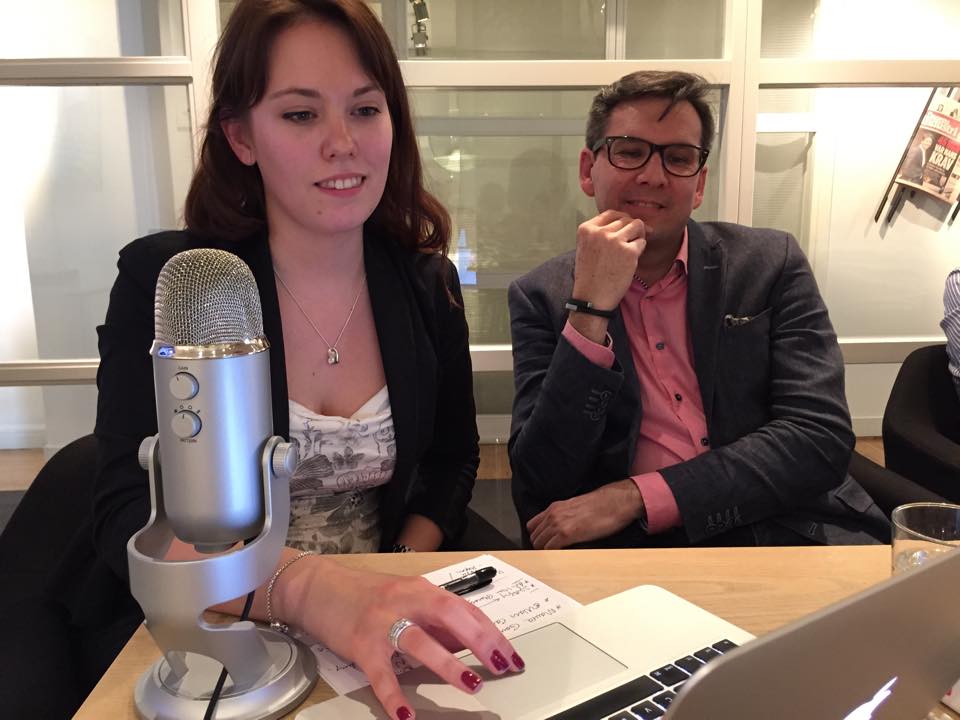
UP connects with members regularly through webinars and global virtual meetings in the cloud.

